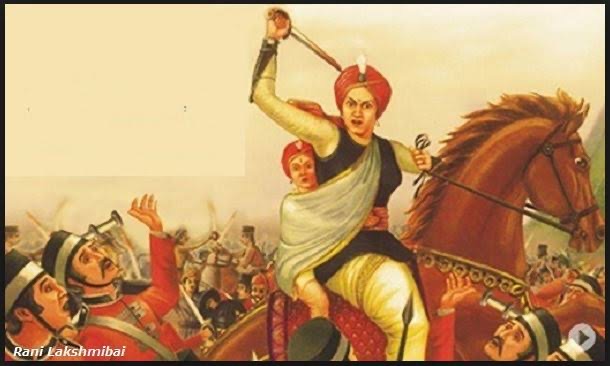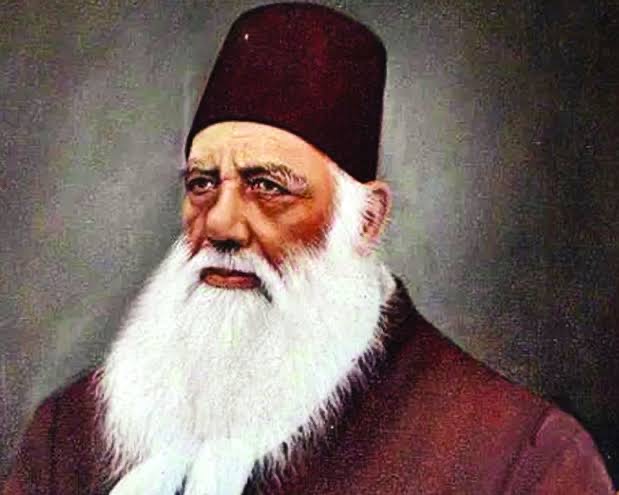TABLE OF CONTENT:
- The arrival of the British:
- Causes of Revolt 1857:
-
Effects of the Revolt of 1857:
-
The Biography of Sir Syed Ahmed Khan
-
Role of Sir Syed after the War of Independence:
The arrival of the British:
The War of Independence 1857 was the dark period &shriveled leaf of the history of the subcontinent, where the white skin people who were far away from the culture of Indians, took over the charge of the whole of India and called British India. By definition, Indians and Britain differed from one another in terms of their race, traditions, and religion. Therefore, the Indians did not warmly welcome the British and did not anticipate favorable outcomes. Aurangzeb Alamgir, the Mughal emperor, was there when Europeans were permitted to enter the subcontinent in the 17th century. The British Company adopted different methods to control the government which will be the cause of the 1857 revolt:
● The British took advantage of this entry to launch their policy by founding the British East India Company and growing their company as a part of their strategy.
● When they first started, British companies bought raw materials like silk, salt, cotton, and other things.
● British participation in political and geographic matters began when they saw the need to maintain their influence over the business side of things.
● They decided to hire Indians to strengthen their military might to cope with future battles and protect themselves from dynasties.
● By using their priests and Christian missionaries, the British began to spread Christianity to convert the Indians.
Causes of Revolt 1857:

The revolt of 1857 was initiated due to various factors which are stated below:
Religious & Social Causes-
Indians were mistreated and restricted from interacting with Europeans during the uprising of 1857, and racism or racial prejudice was thought to be a key contributing factor. Along with torturing the Indians, the whites also began interfering in their religious and cultural concerns.
Political Causes-
The Nawabs and Zamindars who lived in different regions of India lost their influence as a result of the unjust policies that were spread as a result of the British invasion. The introduction of unfair policies such as the trade and commerce policy, the indirect subordination policy, the war, and annexation policy, the direct subordination policy, and the misgovernance policy severely hampered the interests of the rulers of the native states, and they one by one became victims of the British invasion. As a result, those rulers who had lost their territories to the British were logically opposed to them and supported the rebels.
Economic Factors-
The taxation and income system underwent numerous changes that had a significant negative impact on the people. To increase its area, the British government imposed and established several administrative regulations.
Effects of the Revolt of 1857:

the revolt was considered to be an awakener and the first effort towards freedom and independence.
● The Queen promised to respect Rights and dignity. General amnesty to all offenders except murderers.
● The Indian army was reorganized. Included Sikhs, Gurkhas & Pathans.
● The Mughal dynasty ended with the extinction of Bahadur Shah II & was replaced by
the British Crown.
● Freedom of religion granted.
● As per Queen's Proclamation, more Indians joined the administration.
● The British exploited the economy further.
Reasons for the failure of the revolt of 1857:
The revolt was an extraordinary event in Indian history, the result of the revolt was unsuccessful due to some major drawbacks. Here are all the reasons for the failure of the revolt of 1857:
● There was no leader, which was one of the reasons why the sepoy uprising failed. A leader who could both lead and carry out the strategy was needed at that particular time.
● Indian state leaders put an end to the uprising and did not back the Indians.
● There was no cooperation; the northern region participated actively in the 1857 uprising while the southern states stayed out of it.
The Biography of Sir Syed Ahmed Khan:

Several famous intellectuals, statesmen, and scholars have been born on the subcontinent throughout its history, one of them, Sir Syed Ahmed Khan, rose to the top among Muslims. He was the owner of a number of qualities. At the same time, he was a scholar, interpreter, reformer, thinker, educationist, etc.
Sir Syed Ahmed Khan open their eyes in the house of Mir Muttaqi on 17 October 1817 in Delhi. His father Mir Mutaqi was an advisor at the court of Mughal Dynasty Alamgir II. Sir Syed’s formative years were spent with his mother Aziz-un-Nissa, who imparted him with religious education, raising him with strong discipline and made a good character personality. His maternal grandfather, Khawaja Farid-ud-Din gave him early education. Sir
Syed Ahmed Khan acquired knowledge in subjects of Persian Urdu, religiously orthodox, and Arabic, under the supervision of Lord Wellesley. He also received an education in Mathematics, Islamic Jurisprudence, and Astronomy. Sir Syed Ahmed Khan actively participated in the cultural activities of the Mughal Court.
Role of Sir Syed after the War of Independence:
After 1857, the Muslims became known as a backward people who were completely illiterate and illiterate in all aspects of life. They were disregarded in every aspect of life and denied their fundamental rights. The Muslims were compelled by Sir Syed to engage themselves with contemporary Western education."Devote yourself to knowledge; this is your only salvation," was his slogan. Sir Syed believed that "The conquered nations must learn science in which the conquering race excels."He believed that contemporary education, the only means of achieving political and economic advancement, was the answer to all of Muslim's problems.
He took concrete steps for the education plan:
● EstablishmentoftheFirstSchoolinMuradabad(1859):
Set up a school, where English, Persian, Islamiat, Arabic, and Urdu we're compulsory subjects.
● SchoolinGhazipur(1862):
In 1862, Sir Syed was transferred from Muradabad to Ghazipur where he established another school for Muslims, which was known as Madrasa Ghazipur. Here, also English, Arabic, Persian, Urdu, and Islamiat were compulsory subjects.
● ScientificSocietyGhazipur1864:
In 1864, Sir Syed Ahmad Khan laid the foundation of a scientific society at Ghazipur. The purpose of this society was to translate English books into the Urdu language. But, later on, in 1866, after his transfer to Aligarh, the main
office of the scientific society was also transferred to Aligarh.
● AligarhInstituteGazette(1866):
In 1866, the scientific society issued a journal named Aligarh Institute Gazette. This journal was published both in Urdu and English
languages. This journal aimed to wash away the misconception between Muslims and the British government bringing them close to each other.
● Urdu-HindiControversy:
In 1867, there arose a controversy about the official language Urdu which was written in the Persian script. The Hindus wanted to replace this with the Hindi language written in Devanagari script and started agitation for this purpose. The Urdu-Hindi controversy was the
first public display of Hindu bigotry and brought a paradigm shift in the thinking of many Muslim leaders including Sir Syed Ahmed Khan compared to
Hindu-Muslim unity.
● SirSyedandSeparateElectorate:
In India where there was a diversity of race, ethnic origin, religion, sect, and caste such elections could not produce the desired results. The only solution was to introduce separate electorates so that each community could be
represented truly. So Sir Syed took a stance on


You must be logged in to post a comment.